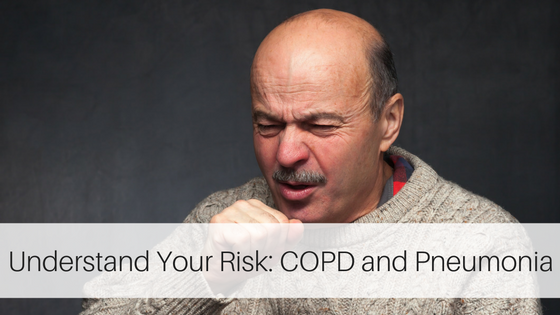November is COPD Awareness Month, and it focuses on a disease that’s the third-leading cause of death in the United States. It’s also a disease that more people suffer from than ever before – while many others have it and don’t know it.
Fortunately, COPD and pneumonia are manageable with the right health care approach. Moreover, identifying who’s most at risk for developing COPD is clearly important, as is educating family members and caregivers about the disease and its effects.
What is COPD?
COPD (chronic obstructive pulmonary disease) is a lung condition that affects a person’s ability to breathe. Many serious and life-threatening complications can arise from COPD, including pneumonia.
What is Pneumonia?
Pneumonia is a lung infection that actually describes some 30 types of infections. It’s dangerous because it reduces the amount of oxygen in the body – sometimes greatly – and can be caused by viruses, bacteria, fungi, or inhaled particles or liquids. For COPD patients, life-threatening complications can develop rapidly and be fatal if not treated. People who suffer from COPD and other lung conditions are at a greater risk of developing pneumonia.
How is Pneumonia Treated?
If your physician suspects that you may be suffering from pneumonia, he or she may order a chest X-ray, CT scan, blood tests, and other tests to determine the cause of the infection. If it’s due to a bacterial infection, antibiotics will likely be your first treatment. It’s important to not only take antibiotics as directed but to take all of them. Halting your antibiotics can allow the bacteria to come back stronger than ever.
Viral pneumonia will likely require antiviral medications, and your doctor may prescribe an inhaler or oral steroid.
No matter the type of pneumonia, treatment must be immediate to prevent permanent damage to the lungs. Treatment may even include a stay in an intensive care unit, and a ventilator will speed oxygen to depleted cells, as well as eliminate excess carbon dioxide.
Who’s Most at Risk?
Smoking is the main risk for COPD and many people who smoke or used to smoke suffer from COPD. Other risk factors include:
- Age. Most people who have COPD are at least 40 years old when they first notice symptoms.
- Long-term exposure to lung irritants such as secondhand smoke, chemical fumes and dust from the workplace or environment, and air pollution.
- Family history. People who have a family history of COPD are more likely to develop the disease, particularly if they smoke.
What are Symptoms?
The signs of COPD and pneumonia can include:
- Shortness of breath that doesn’t improve but gets worse.
- A chronic cough. In the case of pneumonia, you may cough up a dark yellow or green mucus.
- Congestion that lasts for more than a few days.
- Fever, chills, and ongoing fatigue.
At first, COPD may cause only mild symptoms, but symptoms grow worse over time. And severe COPD can cause other symptoms, such as a fast heartbeat, swelling of the feet, ankles, and legs, and weight loss.
The Importance of Prevention
If you suffer from COPD, it’s crucial that you do everything you can to prevent pneumonia. The easiest thing you can do is get an annual pneumonia vaccine. Getting a yearly flu shot is also important, because illnesses like the flu can easily lead to pneumonia in people with COPD. And keeping yourself as physically healthy as possible through diet and exercise is another important preventive measure.


